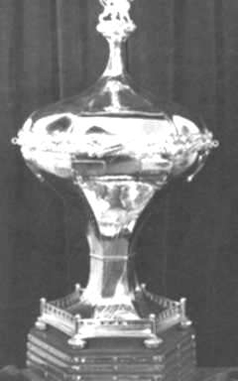
Guild of Air Pilots and Navigators
The Guild of Air Pilots and Navigators (GAPAN) was established in London in 1929.
It was based on the lines of the old City Guilds and Livery Companies and it was set up to maintain standards and established the rules for the aviation profession.
The guild (GAPAN) finally became a Livery Company of the City of London in 1956, the 81st Livery Company to be formed in 800 years.
Ever since the formation of the Guild, the profession's achievers and contributors have been singled-out for recognition through the Guild's awards. From certificates and medals to handsome, elaborate trophies and silver cups, the custom of rewarding success dates back to the 1930s.
Principles applied to qualify -
1. To establish and maintain the highest standards of air safety through the promotion of good airmanship among pilots and navigators.
2. To maintain a liaison with all authorities connected with licensing, training and legislation affecting pilot or navigator whether private, professional, civil or military.
3. To constitute a body of experienced airmen available for advice and consultation and to facilitate the exchange of information.
4. To strive to enhance the communication and the status of air pilots and air navigators.
5. To assist air pilots and air navigators in need through the Guild Benevolent Fund.
Cumberbatch Trophy
This was considered the most prestigious award in the aviation industry, controlled and awarded by the Guild.
It recognized excellence in a person or persons, group, or organizational contributions, in air transport safety, whether by the development of techniques contributing to safer flight, by improvements in ground equipment and services, or by improvements in aircraft and component design.
This trophy was awarded annually, and international airlines featured prominently as flight standards required greater expertise and in-flight passenger service standards, and cabin equipment were totally different from those in the domestic airlines.
International airlines and pilots and navigators, held senior positions regarding the safety in operation, covering long distances and significantly larger passenger loads.
Airlines around the world were assessed, and the top airline notified of the recognition and awarded the trophy by the most senior member of the Guild.
In addition, the Guild recognized Master Air Pilots and Air Navigators, by the recognition of long service and consistently high standards in one or more branches of professional flying, whether civil or military, general air transport, flying instruction, test or operational flying.
TAA wins 1958 Cumberbatch Trophy
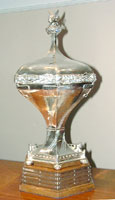
The Guild awarded this trophy in 1958 to 'Trans-Australia Airlines', a domestic airline, and the first Australian airline to be recognized within the Aviation Industry.
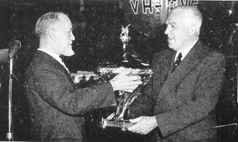
Commissioner Warren Mc Donald receiving the trophy from Capt. O.P. Jones - 1959
Of the eleven Master Air Pilots in Australia at that time, TAA had employed seven.
TAA had made major contributions to essential modifications to both the Convair and Viscount flight procedures and mechanical modifications which were approved by the manufacturers, in 1948 and 1954, and with major contributions to the development of the FOKKER F27 aircraft, to be introduced in 1959 and replace the aging DC3 and DC4 fleets.
Apart from the aircraft, TAA had also developed new procedures for in-flight service, improving standards, and had been first in Australia to introduce 'tourist' class for the development of increased air travel, and proposed 'pure jet' introduction 1957.
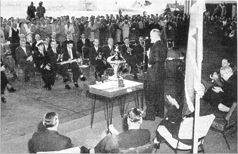
The presentation ceremony Essendon, 1959, and Capt John Benton being awarded his Master Pilot certificate.
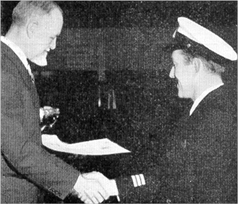
It would be Captain Benton who would be the pilot in the first world skyjack attempt in 1961.